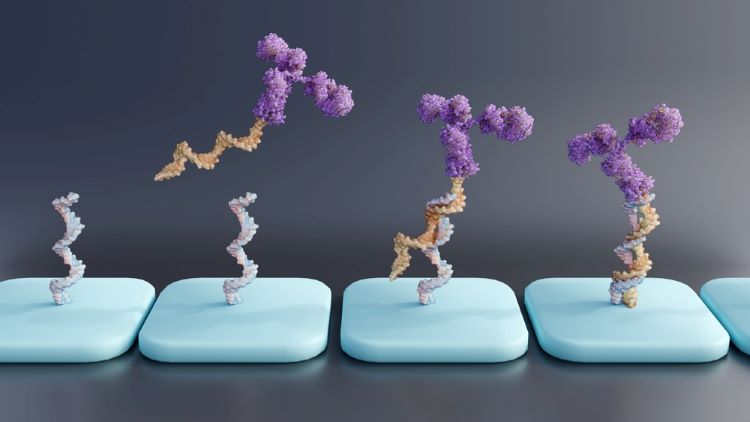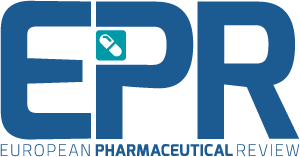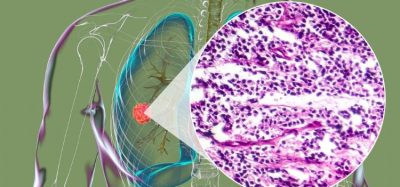Innovating bioanalysis to advance oligonucleotide therapeutics
Posted: 13 February 2025 | Jinpeng Li (WuXi AppTec) | No comments yet
Here, Dr Jinpeng Li at WuXi AppTec reveals the analytical challenges that are hindering advancement of oligonucleotide therapeutics, medicines which have demonstrated clinical promise in the gene therapy space, and discusses promising analytical innovations.


Oligonucleotide therapeutics (oligos), a promising class of drugs that can modulate gene expression or protein function, are reshaping modern medicine. These short-chain nucleic acids, typically 20-80 bases long,1,2 interact with RNA to silence, modify or enhance the expression of specific genes, or else specifically interact with a protein of interest to modulate its function.
[as oligos] advance to late-stage development, robust and reproducible analytical methods become crucial for accurate characterisation and monitoring”
The therapeutic potential of oligos, including subtypes like antisense oligonucleotides (ASOs), small interfering RNA (siRNA) and aptamers, is immense, yet their development presents unique challenges, particularly in bioanalysis.
As drug developers consider oligos’ potential, they often explore innovations in chemical modifications and delivery systems to ensure these therapies reach their full potential. Yet these innovations pose great challenges to bioanalytical techniques and safety evaluations.
To overcome these challenges, novel strategies for pharmacokinetics (PK), toxicokinetics (TK) and immunotoxicity evaluations should be investigated. Furthermore, as oligo therapies advance to late-stage development, robust and reproducible analytical methods become crucial for accurate characterisation and monitoring.
Mechanisms and potential of oligonucleotide therapies
Oligos target RNA, making them a powerful tool to regulate protein expression”
Oligos target RNA, making them a powerful tool to regulate protein expression. This specificity offers several advantages:
• A broad range of targets: Oligos can modulate nearly all proteins by targeting their corresponding RNA, addressing the limitations of traditional small molecules, which are estimated to act on only about 10 percent of proteins3
• Rapid development: Their design leverages well-documented genomic sequences, reducing the time and complexity of drug development
• Reduced off-target effects: The specificity of RNA binding minimises unintended interactions.
Despite their promise, unmodified oligos tend to be unstable, susceptible to enzymatic degradation, and have difficulty crossing cell membranes due to high molecular weights, thus resulting in rapid kidney excretion.2
Furthermore, native oligos may form partial complementary pairs with non-target transcripts, causing off-target toxicity in patients.4 Addressing these limitations requires innovative chemical modifications and delivery systems.
Chemical modifications and delivery systems
Locked nucleic acids (LNAs) and other conformationally restricted analogues have advanced the field by significantly increasing binding efficiency”
Early chemical modifications focused on stabilising the oligo backbone, such as phosphorothioate (PS) modifications, which improved enzymatic resistance but reduced RNA binding affinity.5 Second-generation modifications, like 2′-O-methyl or 2′-O-methoxyethyl substitutions, enhanced stability and affinity. Locked nucleic acids (LNAs) and other conformationally restricted analogues have advanced the field by significantly increasing binding efficiency.
Delivery systems have evolved to address challenges related to bioavailability and target specificity. Chemical conjugates, including fatty acids, peptides or antibodies, are linked to oligos for passive or active targeting. In addition, carrier-based systems like lipid nanoparticles (LNPs), polymers and exosomes are used to encapsulate and deliver oligos to specific tissues or cells.
Bioanalysis challenges
While bioanalysis is critical to understanding the behaviour of oligonucleotide therapeutics in biological systems, their unique properties present several analytical challenges. Chemically modified oligos can exhibit non-specific binding and instability, complicating extraction and analysis.
For example, PS modification increases ASO plasma protein binding and requires extra pre-treatment prior to liquid chromatography-mass spectrometry (LC-MS) analysis. In addition, detecting and quantifying trace amounts in complex biological matrices requires high-sensitivity methods.
Finally, oligo metabolites often share similar structures and molecular weights with parent compounds, leading to potential interference during analysis. Addressing these challenges is essential for ensuring the reliability and accuracy of bioanalytical data, supporting development of these therapies.
Strategies for effective bioanalysis
When selecting appropriate bioanalytical strategies it is essential to strike the right balance between sensitivity and specificity.
Various bioanalytical platforms are used to address these challenges:
1. Liquid chromatography–mass spectrometry (LC-MS/MS) is the gold standard for its specificity and ability to quantify both parent compounds and metabolites. For instance, GalNac-siRNA degradation may produce pharmacologically active metabolites with partial complementarity to the detection probes used in other methods. This high-resolution platform does not rely on Watson-Crick base pairing for target identification, thus avoiding potential interference from truncated molecules and enabling precise differentiation of metabolites and parent compounds.
However, the sensitivity is in the nanogram per millilitre range and requires careful optimisation. Solid-phase or liquid-liquid extraction methods help reduce protein binding and enrich concentrations from the matrix. Liquid-liquid extraction (LLE) uses a solvent to disrupt oligo binding with low cost and requires less handling.
For certain matrices, the clean separation is not always achievable with LLE alone. Solid-phase extraction (SPE) exploits ion exchange with a relatively complicated process and higher cost for better recovery. Ion-pairing reagents improve retention on chromatographic columns but necessitate frequent instrument cleaning to maintain sensitivity.
2. Quantitative polymerase chain reaction (qPCR) is highly sensitive and can detect and quantify oligos in picogram or femtogram per millilitre concentrations. Reverse transcription and primer design are crucial, particularly for self-complementary structures like hairpin RNA. For oligos with complicated secondary structures or shorter lengths requiring high analytical sensitivity, qPCR-based methods remain an ideal solution.
3. Hybrid enzyme-linked immunosorbent assay (hybrid-ELISA) platforms offer flexibility in assay design, with options to reduce background noise and improve specificity. These assays are particularly useful for longer oligos and rely on enzyme-linked detection systems for quantitative analysis. However, the limitations of base pairing methods still apply.
Modifications can be introduced to enhance hybrid-ELISA-based techniques. For instance, Hybrid-ELISA formats employing carefully designed dual-probe hybridisation distinguish the full-length oligo from the truncated n-3 shorter and smaller metabolite. The hybrid-ELISA probe can be optimised with LNA modifications to leverage the enhanced hybridisation affinity and stability. This improves sensitivity, although it offers lower specificity than LC-MS/MS. Assay sensitivity and dynamic range may be further refined by substituting ELISA with electrochemiluminescent (ECL) platforms such as MSD.
Addressing immunogenicity and immunotoxicity
While oligos are less immunogenic than protein-based biologics, modifications and delivery systems can introduce immunogenic epitopes. Regulatory agencies recommend a tiered approach to assessing potential immune responses. The process begins with immunogenicity screening, which detects anti-drug antibodies (ADAs) using bridge or direct ELISA assays. If antibodies are detected, confirmatory and titer assays are performed to characterise the antibody responses and evaluate their strength.
Additionally, oligos can activate innate immune pathways, such as toll-like receptors (TLRs) or complement cascades, leading to cytokine release and potential immunotoxicity. Bioanalytical strategies often include complement activation, cytokine panels and flow cytometry to monitor these effects and provide a comprehensive immune response profile.
Bioanalysis of oligonucleotide therapeutics – innovations and emerging trends
[High-resolution mass spectrometry (HRMS)] provides suitable detection results for analysing novel oligos… making it invaluable in advanced bioanalysis”
As the field of oligo therapeutics matures, regulatory guidance continues to evolve and new analytical techniques are being integrated. High-resolution mass spectrometry (HRMS) is gaining traction for its unparalleled specificity in metabolite profiling, offering a robust solution for distinguishing closely related molecular structures.
HRMS provides suitable detection results for analysing novel oligos with less-defined metabolism processes or with high conversion to known deamination metabolites. Droplet digital PCR (ddPCR) is another innovation that provides higher sensitivity and precision for detecting low-abundance targets, making it invaluable in advanced bioanalysis.
automation is beginning to play a pivotal role in streamlining sample preparation and analysis”
In addition, automation is beginning to play a pivotal role in streamlining sample preparation and analysis. By reducing manual intervention, automated workflows improve reproducibility and minimise labour-intensive processes, enabling faster and more reliable results. One widely used example is SPE-LC-MS/MS automation, which ensures consistent recovery and sample quality after SPE pretreatment, facilitating high-throughput quantification of oligos across different biological matrices.
Meanwhile, emerging therapies, such as exosome-delivered RNA and CRISPR-based approaches, present new challenges and opportunities, demanding further innovation in bioanalytical methods to ensure their safety, efficacy and regulatory compliance.
A final thought
Oligonucleotide therapeutics hold immense potential to revolutionise medicine by addressing previously ‘undruggable’ targets; however, their development hinges on overcoming complex bioanalytical challenges. By leveraging advanced techniques, optimising workflows and addressing immunogenicity concerns, the pharmaceutical industry can unlock the full potential of these innovative therapies.
As these therapies advance into late-stage development, comprehensive validation of bioanalytical methods is crucial to ensure data reliability and consistency throughout development and regulatory approval. By integrating novel bioanalytical methods and committing to rigorous validation, oligonucleotide therapeutics continue to advance as a cornerstone of personalised medicine.
About the author


Jinpeng has over 10 years of experience in academia and industry and has supported the preclinical studies of hundreds of new drugs. Dr Li received a PhD in genetics and environmental toxicology from Michigan State University, has authored 16 peer-reviewed publications and three patents, and has been awarded the Diplomate of the American Board of Toxicology (DABT) credential.
References
1. Yang LF, Ling M, Kacherovsky N, Pun SH. Aptamers 101: Aptamer Discovery And In Vitro Applications In Biosensors And Separations. Chem Sci. 2023;14(19):4961–78.
2. Chi X, Gatti P, Papoian T. Safety of Antisense Oligonucleotide And Sirna-Based Therapeutics. Drug Discovery Today. 2017;22(5):823–33.
3. Liu T, Altman R. Identifying Druggable Targets by Protein Microenvironments Matching: Application to Transcription Factors. CPT Pharmacom & Syst Pharma. 2014;3(1):1–9.
4. Watts JK, Corey DR. Gene Silencing By Sirnas And Antisense Oligonucleotides In The Laboratory And The Clinic. J Pathol. 2012;226(2):365–79.
5. Hammond SM, Aartsma-Rus A, Alves S, et al. Delivery of Oligonucleotide-Based Therapeutics: Challenges And Opportunities. EMBO Mol Med. 2021;13(4):e13243.
Related topics
Biopharmaceuticals, Clinical Development, Drug Development, Gene therapy, Industry Insight, Personalised medicine, Research & Development (R&D), Therapeutics









